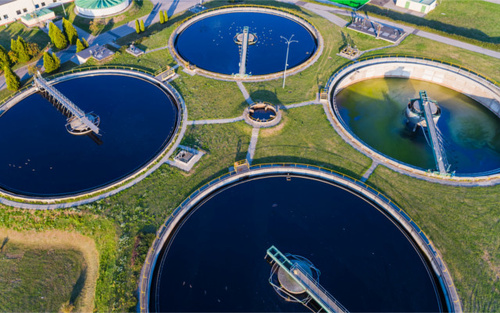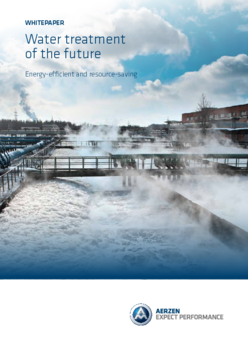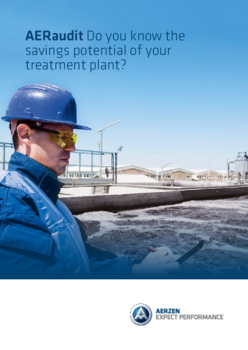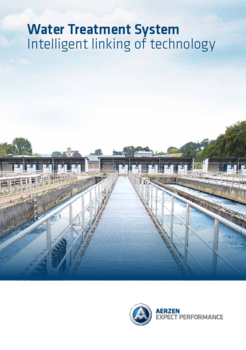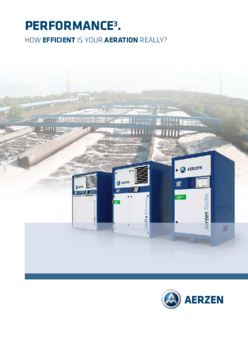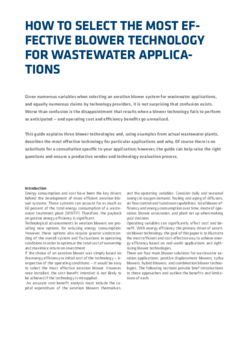The Basic Processes of Wastewater Treatment
Water is a precious commodity. To protect our natural waters and to support drinking water production, all wastewater is therefore first cleansed of containments and pollutants before it is returned to the water cycle. To treat the water and to achieve the best possible, natural water quality, different processes are used. Generally, the treatment of wastewater can be divided into two basic types . Firstly, problematic substances are removed from the water. This is done with cleaning, iron removal, manganese removal, sterilisation, desalination or softening. Secondly, substances are specifically supplemented to improve the quality and influence parameters such as pH value or conductivity.
The stages of water treatment
Several processes are at your disposal for implementing the various preparation stages of water treatment:
- Physical processes for mechanical preparation such as aeration, sedimentation or thermal influence. This also includes the use of screens, filters and sieves.
- Biological processes such as anaerobic wastewater treatment, biochemical oxidation or sludge digestion
- Chemical processes such as neutralisation, disinfection, flocculation and precipitation
- Membrane processes such as filtration, osmosis and nanofiltration
The highest volume of wastewater to be treated is in municipal wastewater treatment plants, which is why a more diverse combination and more effective procedure is necessary here. The procedures used depend on the type of wastewater treatment plant.
The treatment processes in wastewater treatment plants can be divided into different stages.
Stage 1: mechanical water treatment
In the first stage, the still completely untreated wastewater is mechanically treated; this removes about 20 - 30% of the contained solids. To achieve this, the wastewater is guided into a screening plant, where a screen or sieve drum filters out coarse impurities such as leaves, paper or textiles. Various screens, from coarse screens with several centimetres gap width, to fine screens with a gap width of a few millimetres, through which the water flows at different speeds, filter out the coarse materials step-by-step. The mechanically-recovered screen debris is dewatered and disposed of in an incineration plant.
The pre-purified water then passes into what is called a sand collector. In wastewater treatment technology, a sedimentation tank is used to remove coarse particles, such as stones, glass splinters or sand, as well as coarse organic material that has not been separated out by the screens. This happens with a relatively high flow velocity of about 0.3 m/s. A distinction is made between the non-aerated long sand collector, the aerated long sand collector – also called a cylindrical sand collector –, and the round sand collector.
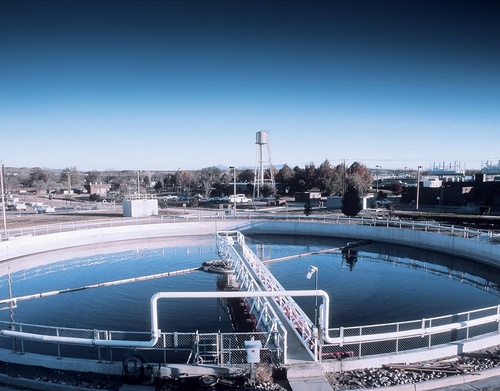
The aerated sand collector removes additional fats and oils from the wastewater, and the following occurs: the introduced process air produces a rolling motion in the water, which carries lighter substances, such as oils and fats, to the surface. They can be easily removed from the water here.
A round sand collector separates substances from the waste water with centrifugal force and sucks them away. After cleaning in the sand collector, the sand collector debris is washed and freed from organic substances. This improves the dewatering of the collected inorganic material, which can, for example, be reused in road construction. If further recycling is not possible, the sand collector debris must be disposed of properly; it is landfilled or destroyed in waste incineration plants.
The primary wastewater treatment tank is the next stage of wastewater treatment. The speed of the wastewater is approx. 1.5 cm/s, significantly slower than in the sand collector. The reduction of the flow velocity is achieved by widening the basin. A low flow velocity is necessary so that the finer dirt particles can, depending on their nature, settle on the bottom or on the water surface. The sludge produced by sedimentation (settling to the bottom) is called primary sludge. It usually consists of organic material. The primary sludge is pushed from the bottom into a fresh sludge hopper by a scraper. The floating substances are transferred to a floating sludge duct. A pump transports the fresh sludge to what is known as a digestion tower.
In the digestion tower, methane gas is produced in four phases (hydrolysis, acidification, acetone gene and methanogene phase); it is converted into electricity in a block heating plant and can be used to supply the plant with energy. The digestion process in the digestion tower is completed after approximately four weeks. What remains is an odourless sludge, which is often used in agriculture after dewatering by centrifuge or filter.
The mechanical cleaning stage ends here. On average, 30% to 40% of the pollution is removed from the wastewater in this phase. On its way through the wastewater treatment plant, the wastewater now reaches the next stage of wastewater treatment.
Stage 2: biological cleaning
In most wastewater treatment plants, the water pre-purified in the mechanical treatment stage now reaches what are known as aeration tanks, which are often designed as circulation tanks. This is where the biological cleaning takes place.
The water is put into circulation by supplying oxygen and with the help of propellers. More or less ventilated areas are created in which different milieu conditions are created for bacteria and microorganisms. These microorganisms feed on the organic contaminants still present in the water and convert them into inorganic substances. The bacteria form activated sludge flocks that float freely in the water. The supply of oxygen stimulates the multiplication of bacteria and thus promotes the formation of activated sludge. This process of biological wastewater treatment is therefore also referred to as the activated sludge process.
The wastewater with the activated sludge is discharged into the secondary wastewater treatment tank. The flow velocity of the wastewater stream is reduced again here. Sedimentation takes place: The activated sludge settles at the bottom of the purified water, where it can be separated from the clear water by mechanical clearing devices at the bottom. Part of it is transferred to the digestion tower as additional biomass. The other part of the sludge, also known as "return sludge" is returned to the aeration tank to ensure that there are enough microorganisms in the aeration tank to break down the dirt. After biological treatment, approximately 90% of the wastewater is cleaned of biodegradable substances. As oxygen is supplied by compressors, the biological cleaning stage is the most energetic phase in the entire cleaning process. Once the water has reached the legally prescribed quality, it can be returned to the water cycle – for example, to a river.
In many other cases, biological cleaning is not sufficient. In these cases, further wastewater treatment processes are necessary – for example, preparation in the form of a chemical treatment. Here, chemical additives are also used.
Stage 3: chemical wastewater treatment
In this stage of wastewater treatment, chemical processes are used for wastewater treatment. To this end, chemical compounds are used to achieve legally prescribed water standard values. Chemical treatment in wastewater treatment plants includes neutralisation, disinfection, phosphate precipitation, nitrogen elimination, deicing and manganese removal.
Neutralisation is used to produce the prescribed pH value, which is achieved by adding an acid, e.g. HCL, or a base, e.g. milk of lime.
During disinfection , pathogens are killed by adding chlorine or chlorine dioxide. The irradiation of the wastewater with UV light is a good alternative to adding chemicals, but it is used less frequently. Phosphate elimination: Our wastewater is frequently contaminated with phosphates from detergents, fertilisers, food additives and faeces. If they remain in the wastewater, they lead to overfertilisation of water bodies and enrichment with nutrients, which can lead to useless plant growth (eutrophication) harmful to the ecosystem.
Phosphates are removed with a chemical precipitation or flocculation process. The phosphate precipitation is partly triggered by the addition of aluminium or iron salts in the sand collector or in the secondary wastewater treatment tank. The metal-phosphate flocks that are formed during this secondary clarification are then taken out of the wastewater together with the activated sludge. Depending on the mode of operation, the phosphate can also be "fished" with the help of microorganisms from the wastewater. In this case we speak of a biological phosphorus elimination, which is, however, still rarely used.
Chemical water purification also includes nitrogen elimination: it is used to remove nitrogen compounds that are harmful to water, such as ammonia and ammonium, from waste water. Nitrogen compounds remove the vital oxygen from the water and can even cause fish to die when discharged into water bodies.
Nitrogen is eliminated by nitrification and denitrification: During nitrification, ammonium is converted to nitrite with the addition of anaerobic bacteria and oxygen – and then to nitrate in a second stage. The subsequent denitrification is also triggered by the addition of anaerobic microorganisms. These decompose the nitrate to nitrogen gas via enzymatic activities, which then is returned to the atmosphere.
Deferrisation: To reduce the iron content of the wastewater to the prescribed value, iron (II) cations are oxidised by the addition of oxygen. To trigger the oxidation process, caustic soda must also be added to the wastewater.
Manganese removal: Manganese is usually present in wastewater as manganese hydrogen carbonate. The addition of oxygen forms poorly-soluble manganese IV compounds, which can be easily removed from the water.
4. Stage: Membrane processes / Nanofiltration
In the fourth and final cleaning stage, membrane and filter processes are used. In part, this purification stage is combined with the chemical processes of precipitation and flocculation. This creates, for example, the method of flocculation filtration. Precipitants and flocculants are added to the wastewater, which causes flocculation of the substances that will be separated. The wastewater with the flocculated material is then passed through a cloth or sand filter.
It slowly seeps through the filter layer. Even the smallest organic suspended solids are removed.
Nanofiltration works in very similar way. In contrast to normal filtration, however, the water is passed under pressure through a membrane that retains even the smallest dissolved particles, such as molecules or heavy metal ions. The same happens with reverse osmosis, in which even higher working pressures and finer membranes are used.
The pollutants retained during filtration, nanofiltration and reverse osmosis are filtered into the sludge treatment in the form of filter sludge via the primary wastewater treatment tank.
The water now reaches the last area of the wastewater treatment plant, the treated water storage tank. Water samples are taken again here and the water quality is checked. The purified water is only returned to the water cycle when the legally prescribed parameters have been met.
